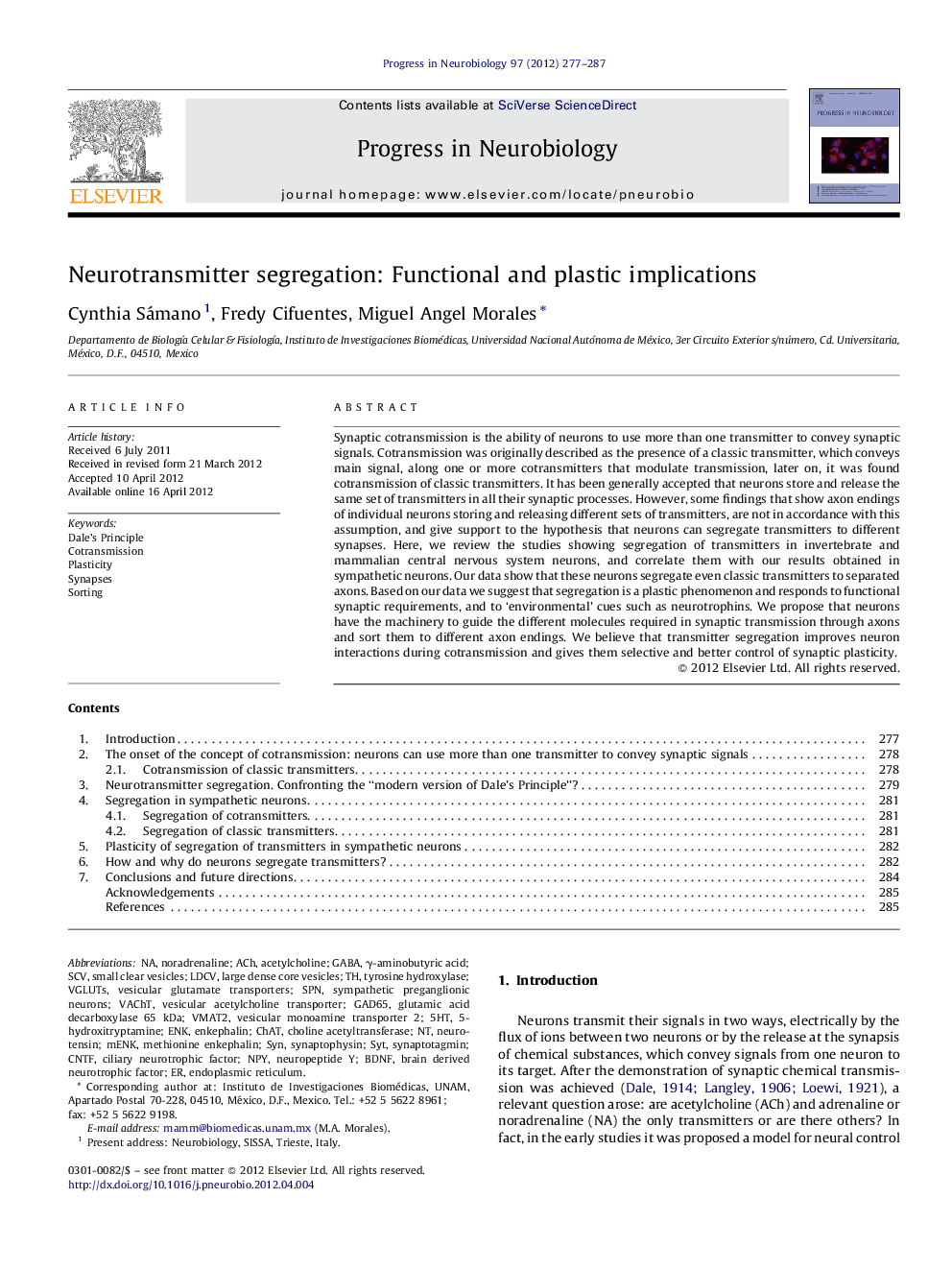| Article ID | Journal | Published Year | Pages | File Type |
|---|---|---|---|---|
| 4353461 | Progress in Neurobiology | 2012 | 11 Pages |
Synaptic cotransmission is the ability of neurons to use more than one transmitter to convey synaptic signals. Cotransmission was originally described as the presence of a classic transmitter, which conveys main signal, along one or more cotransmitters that modulate transmission, later on, it was found cotransmission of classic transmitters. It has been generally accepted that neurons store and release the same set of transmitters in all their synaptic processes. However, some findings that show axon endings of individual neurons storing and releasing different sets of transmitters, are not in accordance with this assumption, and give support to the hypothesis that neurons can segregate transmitters to different synapses. Here, we review the studies showing segregation of transmitters in invertebrate and mammalian central nervous system neurons, and correlate them with our results obtained in sympathetic neurons. Our data show that these neurons segregate even classic transmitters to separated axons. Based on our data we suggest that segregation is a plastic phenomenon and responds to functional synaptic requirements, and to ‘environmental’ cues such as neurotrophins. We propose that neurons have the machinery to guide the different molecules required in synaptic transmission through axons and sort them to different axon endings. We believe that transmitter segregation improves neuron interactions during cotransmission and gives them selective and better control of synaptic plasticity.
► This review focuses on synaptic transmission, cotransmission and segregation of neurotransmitters. ► Neurons have the capability to segregate transmitters to separate endings. ► Neurotransmitter segregation is plastic and responds to synaptic requirements such as neurotrophins. ► A model of segregation mechanism is proposed. ► We discuss the advantages of neurotransmitter segregation.
